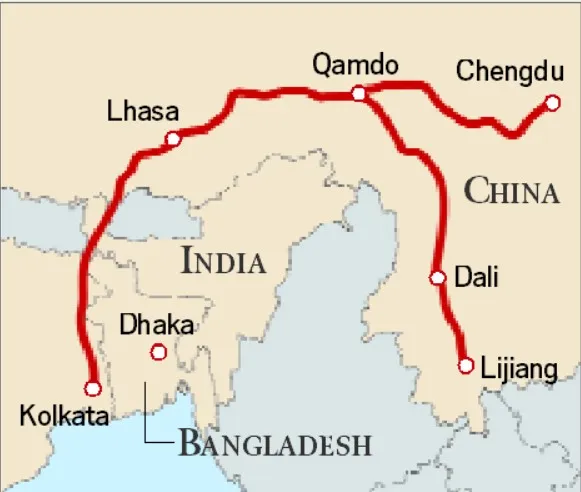Kaziranga National Park
India’s External Affairs minister and Heads of missions of 61 countries visited the Kaziranga National Park.
About Kaziranga National Park (KNP)
- KNP is located between the Brahmaputra River and the Karbi (Mikir) Hills in Assam, India.
- Status: National Park, Tiger Reserve, Important Bird Area (IBA), and UNESCO World Heritage Site (1985).
- Famous For: Largest population of Indian one-horned rhinoceros (2,613 as per 2022 census).
- Biodiversity: Home to tigers, elephants, swamp deer, wild buffalo (Big Four).
- Important area for migratory birds as it is located at the junction of the Australasia and Indo-Asian flyway.
- Tags :
- National Park
- UNESCO World Heritage Site
- Assam
- Important Bird Area
Adolescent Girls Club
First ‘Adolescent Girls Club’ under Mission Shakti was launched in Nagaland.
- Such adolescents' girls' clubs are formed at both government and private schools for the girls in the age group of 10-19 years.
About Mission Shakti
- Ministry: Ministry of Women and Child Development.
- Two sub-schemes: Sambal (for safety and security of women) and Samarthya (for empowerment of women).
- Sambal includes One Stop Centre (OSC), Women Helpline (WHL), Beti Bachao Beti Padhao (BBBP) and Nari Adalat.
- Samarthya includes Ujjwala, Swadhar Greh, Working Women Hostel, National Creche Scheme for children of working mothers and Pradhan Mantri Matru Vandana Yojana (PMMVY).
- Tags :
- Mission Shakti
- Adolescents in India
- Women Empowerment
Articles Sources
Soliga Tribe
Prime Minister praised the efforts of soliga tribe in increasing the tiger population in Biligiri Ranganatha Swamy Temple (BRT) Tiger Reserve.
About Soliga Tribe
- Soligas are nomadic people who live in the Biligiriranga Hills region of Southern Karnataka and some parts of Tamil Nadu.
- In 2011, they became first tribal community living inside a tiger reserve to get legal rights to the forest.
- They live off forest produce like honey, berries and timber and practice subsistence agriculture.
- They speak Soliga, a Dravidian language closely related to Kannada.
- They worship tigers as sacred beings and refer to the tiger as Dodda Nayi.
- Tags :
- Tribes
- Karnataka
- Linguistic Diversity
Black Plastic
A study highlighted that black plastic products contain a flame-retardant chemical called decabromodiphenyl ether (BDE-209) that had been linked to potential human health risks.
About Black Plastic
- Black plastic is often made from recycled electronic waste such as computers, TVs, and appliances.
- The electronics typically contain substances such as the flame retardants bromine; antimony; and heavy metals such as lead, cadmium, and mercury.
- These substances and heavy metals are known to be toxic to humans at high levels of exposure and are now banned in many countries.
- Tags :
- Plastic Pollution
- Toxic Chemicals
PM-KISAN Scheme
Prime Minister congratulated farmers on completion of six years of Pradhan Mantri Kisan Samman Nidhi (PM-KISAN) scheme.
About PM-KISAN Scheme
- Ministry: Launched in 2019 by Ministry of Agriculture & Farmers Welfare.
- Objective: To supplement financial needs of all eligible landholding farmers' families in procuring various inputs.
- Benefits: Provides Rs.6,000 annually to small and marginal farmers in three Rs.2,000 installments via DBT.
- Beneficiaries: All landholding farmer families, excluding institutional landholders, higher-income taxpayers etc.
- Funding: A Central Sector scheme with 100% funding from Government of India.
- Tags :
- Ministry of Agriculture & Farmers Welfare
- PM-KISAN
Palaeognathae Group of Birds
A new study by the University of Bristol challenges the assumption that Palaeognathae groups birds are ‘dumb’.
About Palaeognathae Group of Birds
- Palaeognathae is a group of flightless birds that evolved early from dinosaurs.
- It includes birds such as ostriches, emus, rheas, cassowaries, and kiwis.
- Classification:
- Tinamiformes: e.g. tinamous of South and Central America;
- Tinamous have a keeled sternum and can fly (weakly),
- Ratitae, or ratite birds: With flat sterna and reduced wings, and cannot fly at all.
- It includes African ostrich, rhea of South America; Australian emu and New Guinea cassowary; and the kiwi of New Zealand.
- Tinamiformes: e.g. tinamous of South and Central America;
- Tags :
- Birds
- Ratites
- Palaeognathae
Tea Horse Road (THR)
China’s Ambassador to India recently posted on X about historic Tea Horse Road.

About THR
- It connected India to China, through Tibet( Although not as well-known as Silk Road, which linked China and Europe).
- It does not refer to a single road but a network of branching paths that began in southwest China and ended in the Indian subcontinent.
- Two main pathways passed through cities like Dali and Lijiang in Yunnan province, and reached Lhasa in Tibet, before entering the Indian subcontinent where they branched into present-day India, Nepal, and Bangladesh.
- Origin: Tang dynasty in China (618-907 CE).
- It was a crucial commercial pathway for centuries.
- Tags :
- India-China Trade
- Trade Routes
- Tea Horse Road
Zagros Mountains
According to a recent study, a hilly area surrounding Zagros Mountains in Iraq is being pulled into Earth.
- Ancient Neotethys oceanic slab is developing a significant tear from southeast Turkey to northwest Iran, causing it to split and sink into Earth's mantle.
About Zagros Mountain
- Location: Major mountain range in Central Asia.
- Geographical Extent: Covers around 1,500 kilometers in a northwest to southeast direction from border areas between eastern Turkey and northern Iraq to Strait of Hormuz (Iran).
- Highest Peak: Mount Dena
- Climate: Semi-arid temperate climate
- Vegetation: Temperate broad-leaved forests and steppe vegetation.
- Tags :
- Plate Tectonics
- Zagros Mountain



